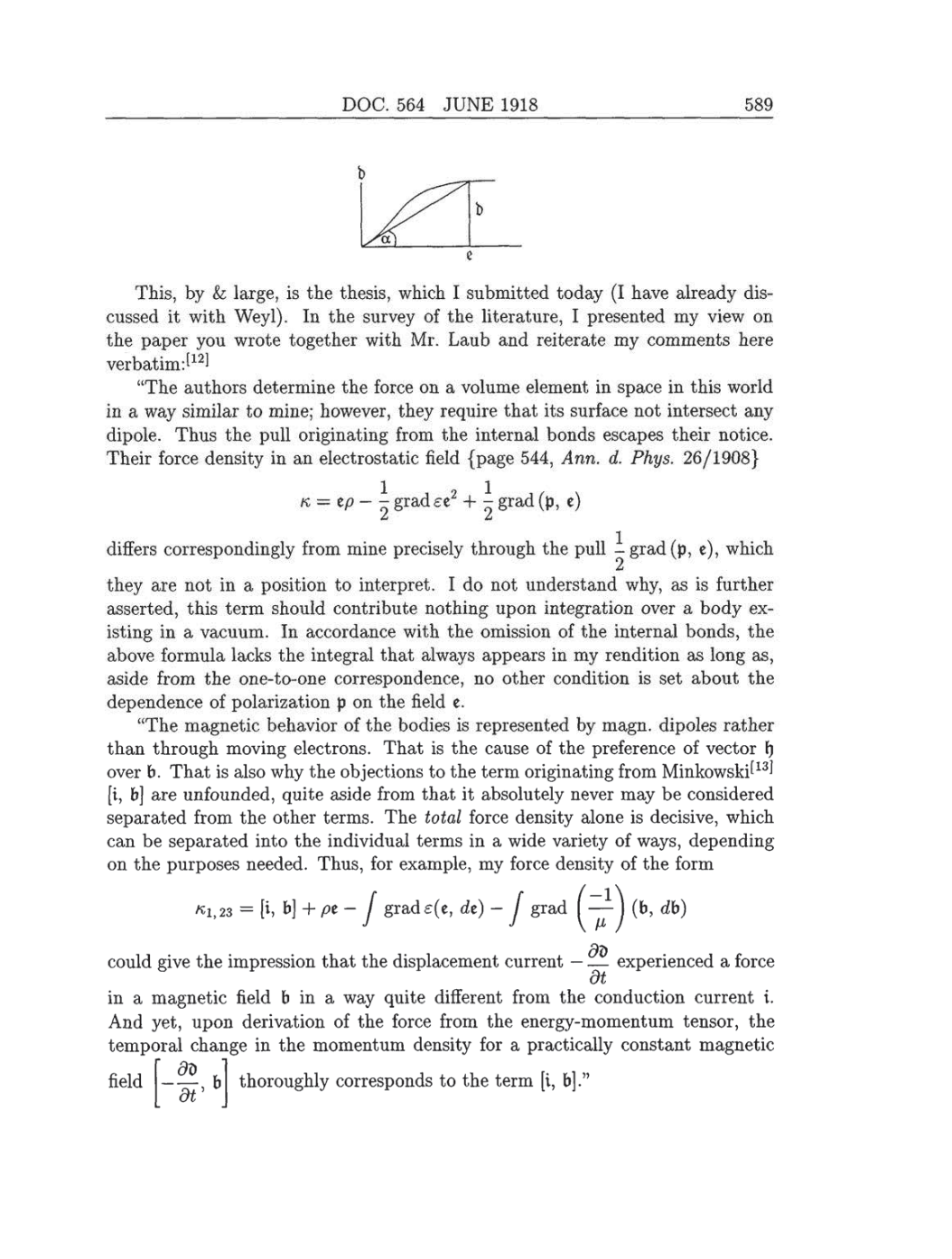DOC.
564
JUNE
1918 589
This, by & large,
is
the
thesis,
which
I
submitted
today
(I
have
already
dis-
cussed it
with
Weyl).
In
the
survey
of
the
literature, I
presented my
view
on
the
paper you
wrote
together
with
Mr.
Laub and reiterate
my
comments here
verbatim:[12]
“The
authors
determine
the
force
on a
volume element in
space
in
this
world
in
a way
similar to
mine; however, they require
that
its surface not intersect
any
dipole.
Thus
the
pull originating
from
the internal
bonds
escapes
their
notice.
Their
force
density
in
an
electrostatic
field
{page 544,
Ann.
d. Phys. 26/1908}
«
= ep
-
g
grad£e2
+
2
grad
(P
c)
differs
correspondingly
from mine
precisely
through
the
pull
1/2
grad
(p, c),
which
they
are
not in
a
position
to
interpret. I
do not
understand
why, as
is
further
asserted,
this
term should
contribute
nothing
upon
integration
over a
body
ex-
isting
in
a vacuum.
In
accordance
with
the
omission
of
the internal
bonds,
the
above formula lacks
the
integral
that
always appears
in
my
rendition
as
long as,
aside from
the
one-to-one
correspondence,
no
other
condition
is set
about the
dependence
of polarization
p
on
the
field
e.
“The
magnetic
behavior of
the
bodies
is
represented by magn. dipoles
rather
than
through
moving
electrons.
That
is
the
cause
of
the
preference
of
vector
h
over
b.
That
is
also
why
the
objections
to
the
term
originating
from
Minkowski[13]
[i, b]
are
unfounded, quite
aside from
that it
absolutely
never
may
be considered
separated
from
the other
terms. The total
force
density
alone
is
decisive,
which
can
be
separated
into
the
individual
terms
in
a
wide
variety
of
ways, depending
on
the
purposes
needed.
Thus,
for
example, my force density
of
the
form
«1,23 =
[i, b]
+
pt-
J
grads(e,
de)
-
ƒ
grad
(&
db)
could
give
the
impression
that the
displacement
current
-dd/dt
experienced
a
force
in
a
magnetic
field
b
in
a
way quite
different from
the
conduction current
i.
And
yet, upon
derivation
of
the
force from
the
energy-momentum
tensor,
the
temporal
change
in
the
momentum
density
for
a practically
constant
magnetic
field
[-dd/dt,b]
thoroughly
corresponds
to
the
term
[i,
b].”
